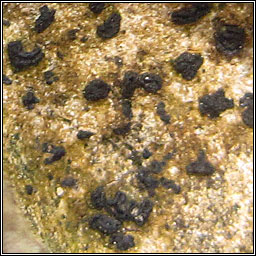
|
Opegraphaceae
Opegrapha dolomitica Growth type crustose. BLS conservation evaluation: LC NS Chemical results negative. Epithecium brown, K– Occurs on sheltered, moist limestone, calcareous schists, mortar or base-enriched siliceous rock, often in damp, shady recesses and underhangs. The pale grey, greenish or brownish-red thallus is thin, either smooth or cracked and often +/- immersed. Blackish-brown, sessile to semi-immersed lirellae variable, longitudinally furrowed or sub-gyrose, disc remaining slit-like. Spores 3(-4) septate, (20-)22-26(-31) × 5-8 µm. Micrographs below Similar: Arthonia calcarea (Opegrapha calcarea) has shorter spores |
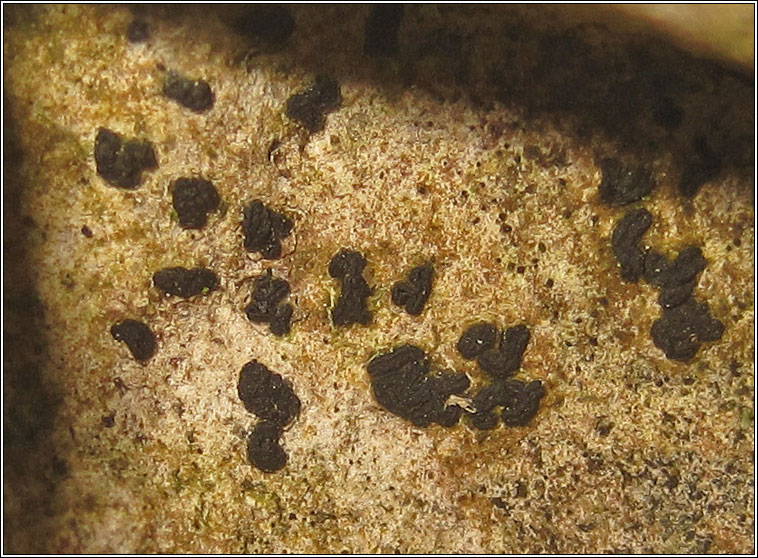
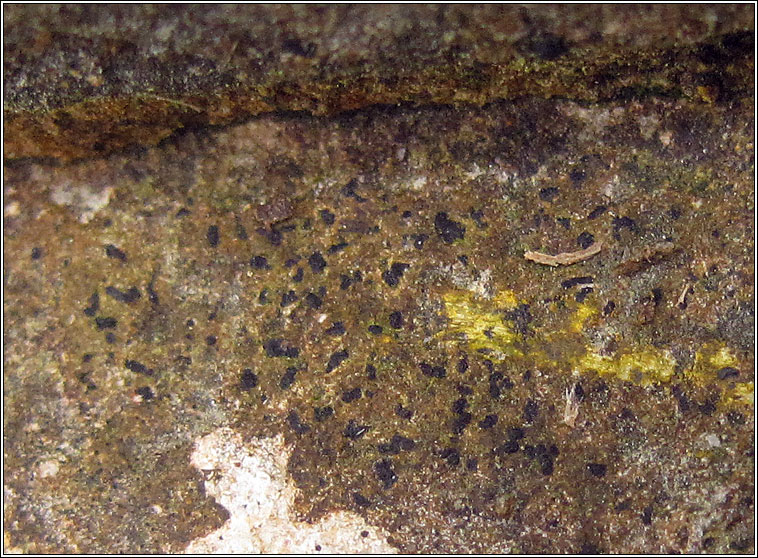
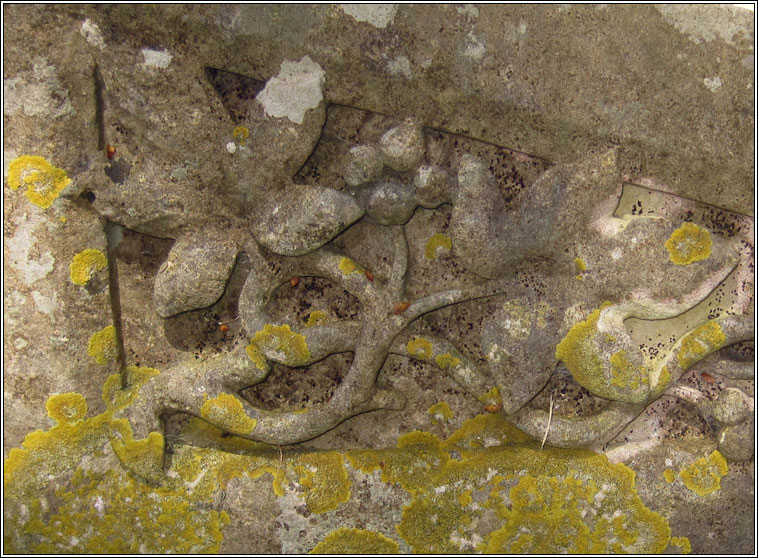
Microscope photographs
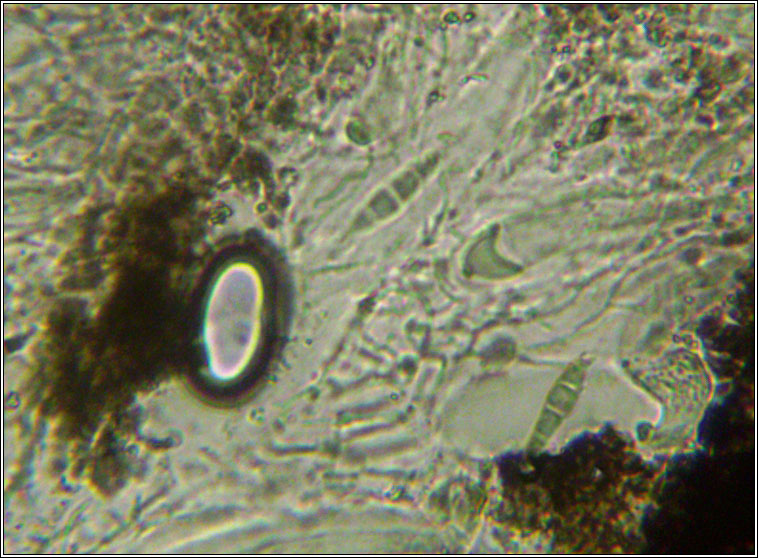
Opegrapha dolomitica
Puddletown, Dorset. May 2017